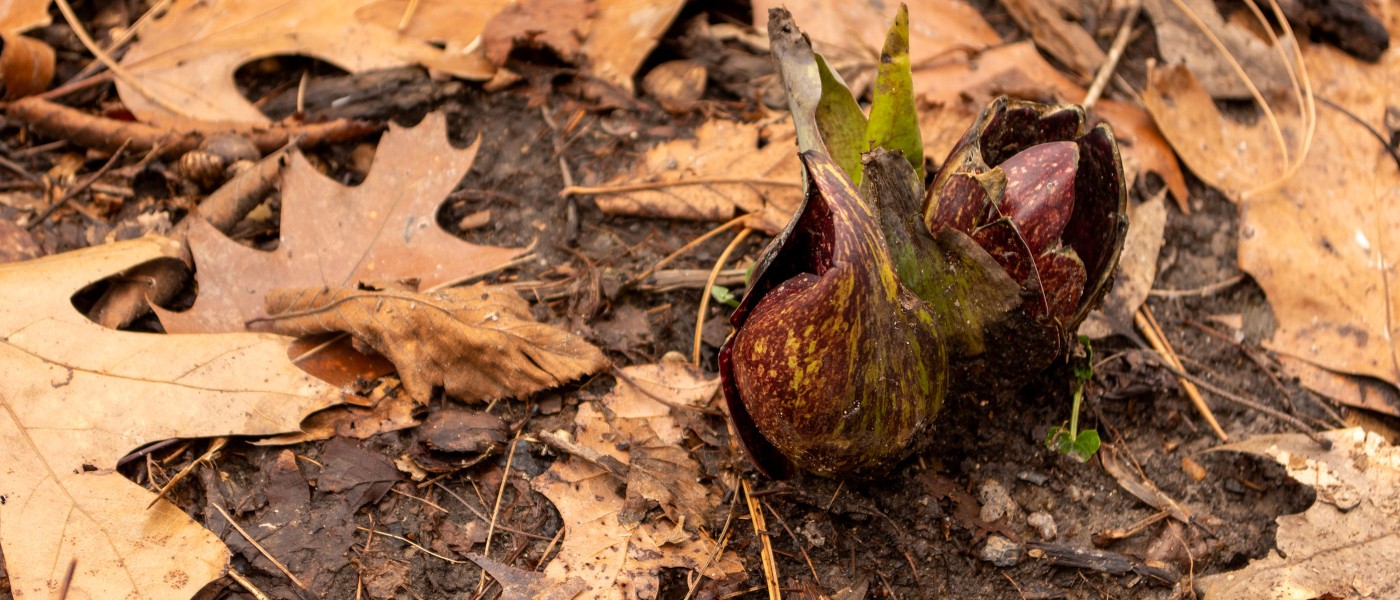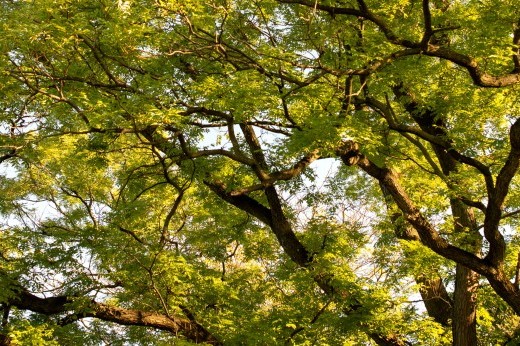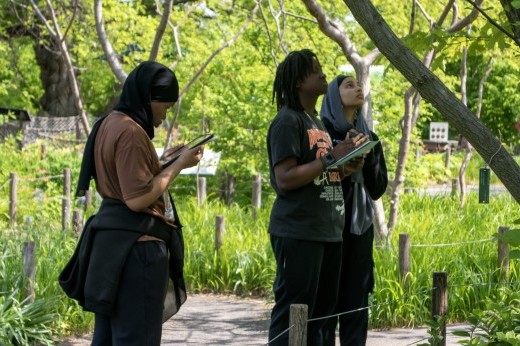In the dead of winter, an odd, slightly smelly little wildflower blooms in the Native Flora Garden.
Commonly known as a skunk cabbage or eastern skunk cabbage (Symplocarpus foetidus), this fascinating plant can generate its own heat, raising its temperature up to 95 degrees Fahrenheit warmer than the surrounding area—enough to melt snow—in a process known as thermogenesis.
“I find everything about this plant bizarre, amazing, and charismatic,” says Joanna Coleman, an urban ecologist and assistant professor of biology at CUNY. “I’ve fallen in love with it.”
Skunk cabbages can be found growing along streams and in muddy, wet environments in eastern North America. Not actually a cabbage, but rather a member of the Araceae or arum family, its unique winter bloom is comprised of a swooping maroon (or sometimes green or mottled) spathe, or hood, that surrounds a spadix, or spike, covered in tiny yellow flowers.
In an interesting twist, skunk cabbage flowers emerge before their leaves. The spathe pops up in late winter or very early spring (in Brooklyn, it often happens in January or February), its ability to create heat offering protection from frost. The flowering period lasts for several weeks, then the spathe starts to decline as the weather warms in early spring. Around this time, its large green leaves unfurl, eventually dying back by the end of summer. The plant emerges the following year from a thick rhizome, or modified underground stem.
Coleman and her lab are conducting an urban ecology study of the eastern skunk cabbage across several sites in and around New York City, including at Brooklyn Botanic Garden. Coleman’s work has previously focused on bats, which can also raise their own body temperature (she calls skunk cabbages “the bat of the plant world”).
This winter, Coleman and field ecologists Gretchen Begley and Matthew Stanton are spending time at BBG recording data and taking samples from the Garden’s small population of skunk cabbages.


The project, which Coleman inherited from a former graduate student, will investigate a variety of questions related to how urbanization affects skunk cabbages. Cities are warmer than outlying areas because of the urban heat island effect; they also have drier, more disturbed soils and more pollution. So how does this impact where skunk cabbages grow? And how does urbanization—and climate change—affect their phenology, or the timing of life cycle events like flowering?
“With both climate change and urbanization, a common observation is that spring phenophases, like flowering, for example, are occurring earlier,” Coleman notes.
The team is collecting community science data to help answer these questions. They’re also collecting temperature data from skunk cabbages to examine how warmer urban environments might affect thermogenesis.
“If the city is warmer than outlying areas, well, maybe the plant doesn’t have to do this behavior as much,” Coleman hypothesizes. This could save the plant energy, but also produce cascading ecological effects; if the plant’s warmth helps its scent attract pollinators, as researchers believe, then a change in heat-producing behavior could affect its reproduction.
So what’s the big picture? “We need to understand how climate change and urbanization, and the interaction between them, is going to affect the behaviors of plants, animals, and other organisms in the environment,” explains Coleman.
Her lab is also collecting DNA to learn who is pollinating these plants, and whether that assemblage shifts in urban areas. Skunk cabbages are thought to be pollinated by beetles and flies (as is often the case for stinky flowers reminiscent of raw meat), but there are “so many unknowns,” says Coleman. For all its charisma, there is limited scientific research on the eastern skunk cabbage.
Though their work is still in process, we know one thing for certain: Skunk cabbages do smell, at least when damaged. Opinions on that scent tend to vary.
“It’s like a faint, almost garlicky, swampy aroma,” says Stanton. “It reminds me of Shrek.”
If you’re curious about skunk cabbages, come check them out in BBG’s Native Flora Garden. You can find other populations nearby in Central Park, Van Cortlandt Park in the Bronx, and High Rock Park in Staten Island.



